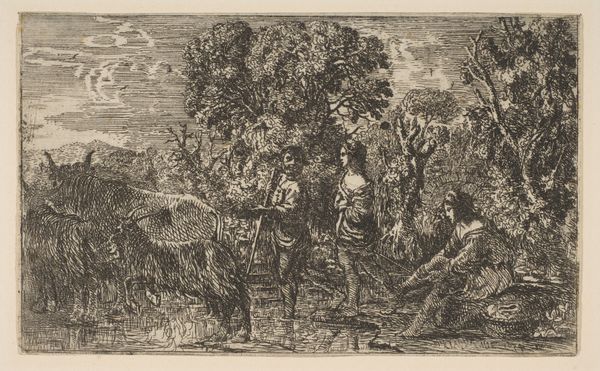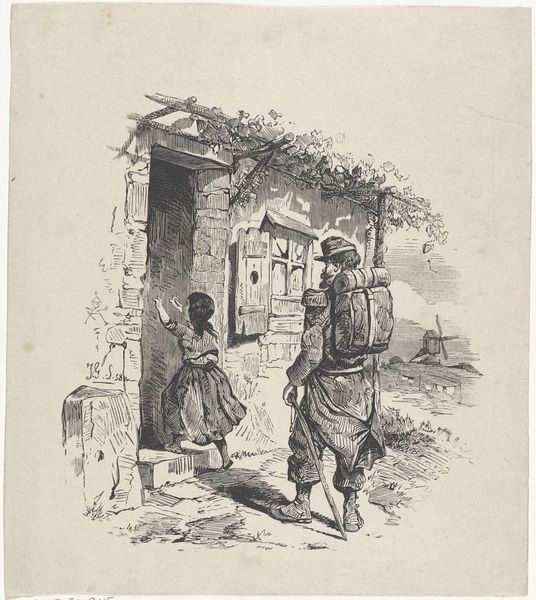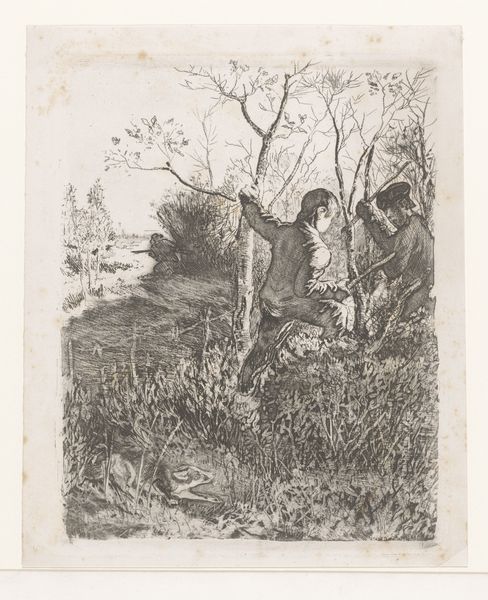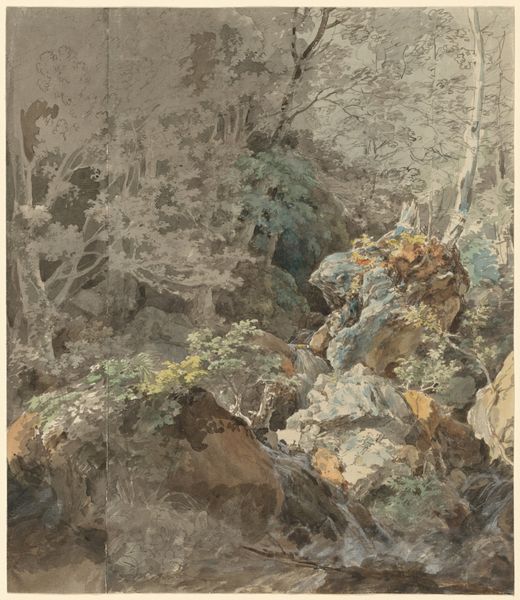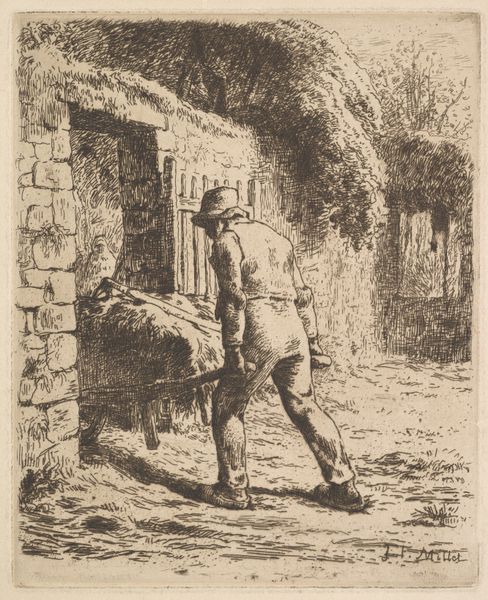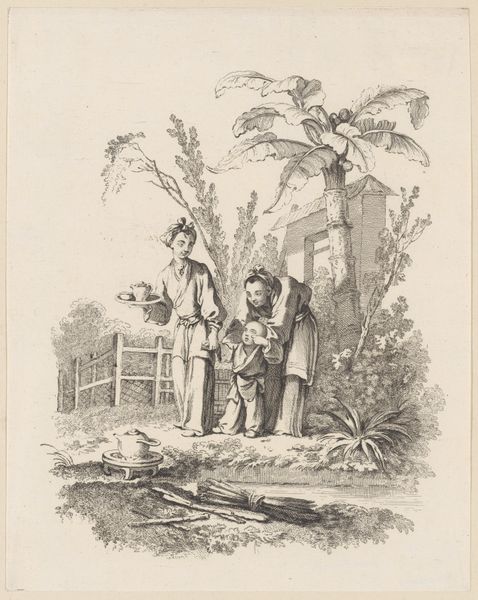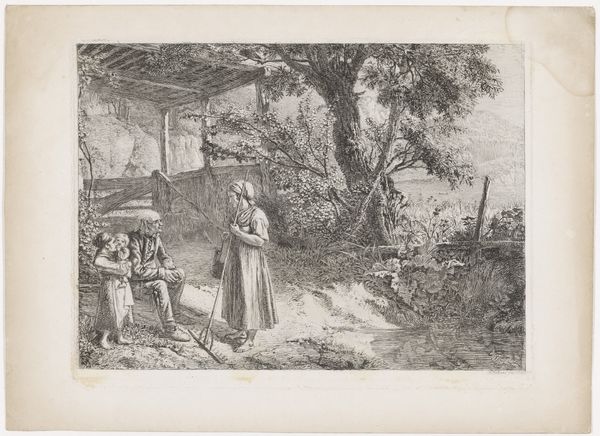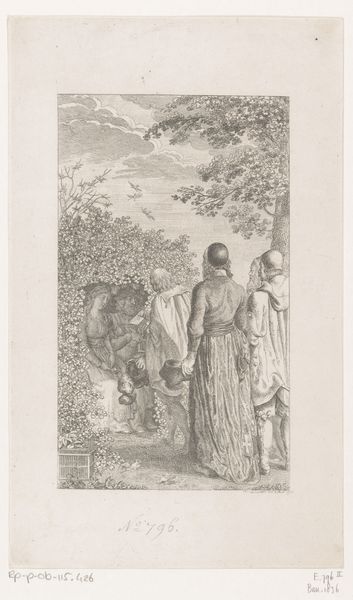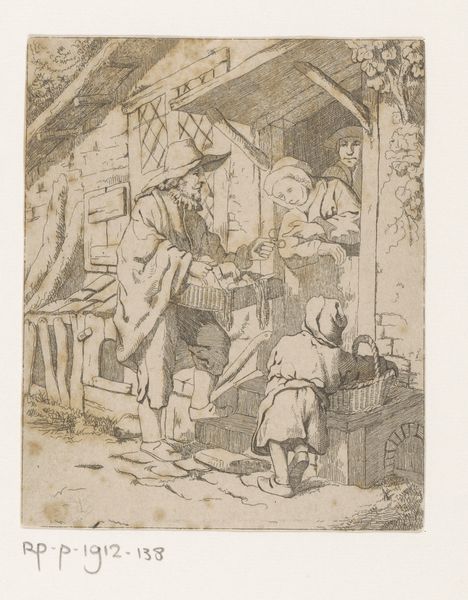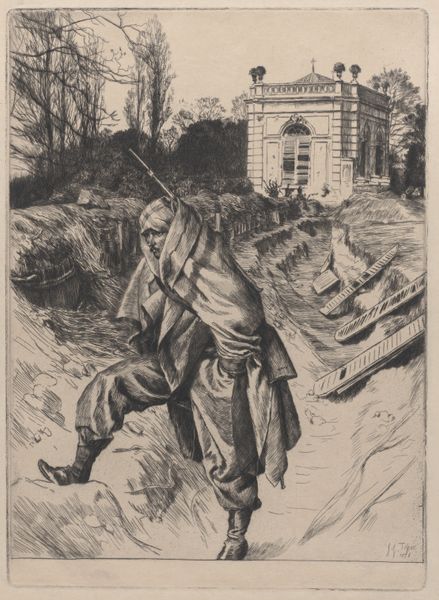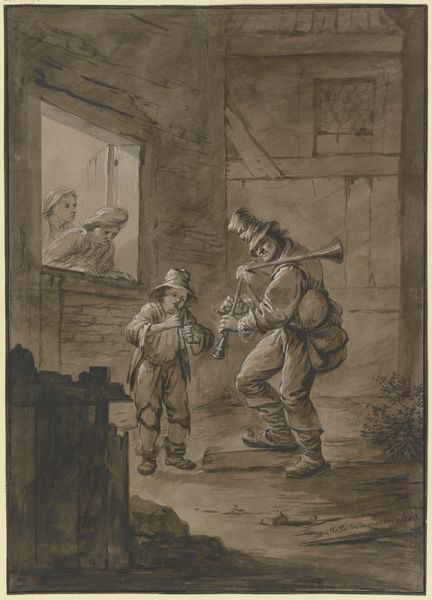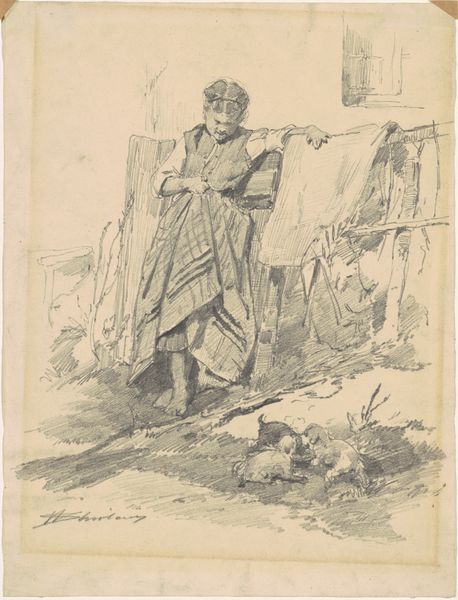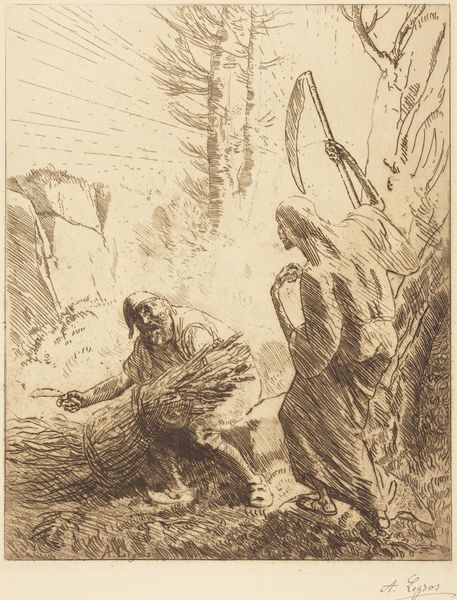
drawing, paper, watercolor
#
drawing
#
landscape
#
figuration
#
paper
#
watercolor
#
coloured pencil
#
romanticism
#
genre-painting
#
watercolor
Copyright: Public Domain
Editor: So, here we have Philipp Rumpf's watercolor and colored pencil drawing, "Conversation at the park gate." It feels quite intimate, almost like eavesdropping on a private moment. The muted colors and focus on these figures by the gate creates a specific, almost idyllic mood. What are your initial thoughts when you see this work? Curator: It speaks volumes about the changing roles of art and its audience. During the 19th century, we see a surge in genre paintings and landscape art like this. Public art exhibitions were becoming more common, and art began to cater to a broader, middle-class audience who were interested in relatable scenes from everyday life. What do you make of the social dynamic presented? Editor: It seems like a simple interaction, perhaps a young woman receiving news from a traveler? The setting itself seems to suggest a pastoral ideal. Is it possible this image is more than what it appears to be? Curator: Precisely! The romanticised depiction of rural life often masked complex social realities. Consider the socio-economic conditions of the time; the industrial revolution was driving people to cities. Paintings like this provided a comforting, nostalgic contrast. Who was buying art and what sort of statements might this be making? Editor: I guess wealthy urbanites looking to remember or idealize a rural life they were leaving behind. Curator: Exactly. This creates a cultural feedback loop, where the art both reflects and shapes the viewers perception of the countryside. I also wonder how such romantic paintings contributed or catered to contemporary, often nationalist sentiments. Editor: It’s interesting how something that seems so straightforward can be embedded in such a complex web of social and historical context. Curator: Indeed, the beauty of art history is finding these layers. Editor: This was fascinating. Thanks for untangling this unassuming piece with me!
Comments
No comments
Be the first to comment and join the conversation on the ultimate creative platform.
